The MDE15 works, selected by the artists to be exhibited in the conventional showrooms, will be set in the rooms of the Museo de Antioquia and its Casa del Encuentro (Meeting House), and the Casa de la Música de EPM (EPM Music House) located in the Parque de los Deseos (Park of Wishes). The MDE15 will also include some fleeting works made in different public spaces of the city.
The artists invited by the MDE15 under these two categories, alphabetically listed:
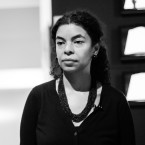 Liliana Angulo
Colombia
Liliana Angulo
Colombia
Angulo focuses on revealing prejudices and notions of subordination prevailing in the representations of Afro-descendant communities and cultures. Through strategies of destabilization of the concepts of subject, object and viewer of art that prevailed as a colonial heritage, she subverts established conventions by means of performances and readings from historical or current situations. In this installation, she claims the essential and invisible contribution of black slavery to the development of important projects for the Eurocentric model of progress such as the scientific expeditions, specifically the Botanical Expedition of José Celestino Mutis. According to the artist, this recognition is a basic…
Read more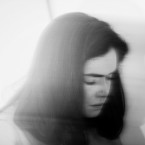 Magdalena Fernández
Venezuela
Magdalena Fernández
Venezuela
Fernández updates the geometric tradition adopted by the artists, sometimes as a heavy burden, who have emerged from Venezuela during the last quarter of the twentieth century. This renewing procedure keeps the geometric language, but with a kind of contextual contamination. With Jesús Soto as a historical reference, Atardercer urbano (Urban Sunset) is the sound recording and its visible equivalent of a sunset in Caracas, including the sound of the emblematic pans of the political opposition in recent governments. Guacamaya (Macaw) makes us think of Mondrian or Oiticica, but it naturalizes the geometry that doubles up to the cry of…
Read more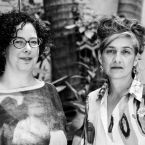 Mapa Teatro
Colombia
Mapa Teatro
Colombia
This artistic creation laboratory flows among theater, literature, music, plastic arts and life itself. It unexpectedly renews the role of art in society and avoids instrumentalising it. Its ability to mobilize collective imaginaries becomes empowered. Its installation reflects a moment of a larger project devoted to Anatomía de la violencia (Anatomy of Violence) that gathers expressive, aesthetic, and reflective tools such as fragments of the sociopolitical reality, allegories or references to classical myths, images and sounds of the environment as well as powerful and accurate passages of composed or recycled kinds of music. Throughout this work, Mapa Teatro offers a…
Read more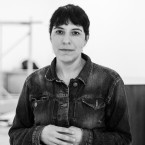 María Buenaventura
Colombia
María Buenaventura
Colombia
The social imaginary of the conquest of Latin America is made up of political, religious and military situations with illuminated historical figures on pedestals and paintings. Those circumstances are useful to build stories that hide the complexity of this process. Only in a few records it is possible to see the reality implied in the large movements of people and the supplies required to dominate the continent. In her work, Workshop office of reconstruction of migratory flows, María Buenaventura uses the story of a “re- creative researcher” responsible for designing the logistics of the conquest to build a very different…
Read more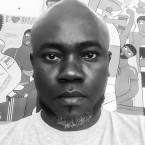 Michael Soi
Kenya
Michael Soi
Kenya
Michael Soi makes satirical comments about issues that have a general impact on society. From politics to sex tourism, he explores issues the government prefers to ignore. This work echoes in European, Asian and Latin American countries. Both Colombia and Kenya appear on the lists of favorite destinations for sex tourism and exploitation of natural resources. His hilarious paintings invite us to ponder several social and political issues such as human rights, gender and globalization. They make us think about the real beneficiaries and human cost of this type of development.
Read more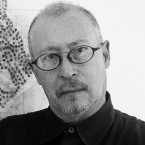 Miguel Ángel Rojas
Colombia
Miguel Ángel Rojas
Colombia
The career of this prominent Colombian artist is based on a critical reflection of conceptualist affiliation. In the seventies he produced works, especially photographs, which caught the public’s attention by mercilessly and poetically revealing difficulties of the homosexual condition in a society inflexible towards differences. His critical point of view has increasingly focused on issues such as the inequality in the differences of perception and judgment about the producer and consumer countries in the dynamics of international drug trafficking, as the Medellín-New York text, written with coca leaves and dollar bills, has ironically proposed. He has also addressed often invisible…
Read more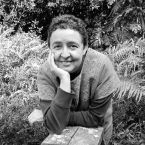 Mónica Mayer
México
Mónica Mayer
México
Mayer is one of the main reference points for the production of post-feminist art in Mexico and the region. Her individual and collective work faces feminist, social and cultural issues in a sharp way. El tendedero (Clothes line), 1977-2015, was originally made in Mexico and is now reactivated for the MDE15. This action becomes an installation of ballots on a cloth line containing phrases like “As a woman, what I hate the most in my city is…” This simple gesture, carried out with people from the city, aims to empower different subjects and spectators and induce a critical look at…
Read more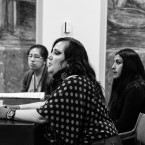 Mujeres creando
Bolivia
Mujeres creando
Bolivia
Mujeres Creando is an anarchist, feminist collective that uses creativity as an instrument for resistance and social participation. Feminist Runway is an audiovisual project that documents parodies of fashion runway involving ordinary women intervening in iconic places in the city of La Paz, Bolivia. Through these interventions they protest against the imposition of beauty stereotypes and the objectification of women, while denouncing the control exercised over bodies by the fashion industry, modeling and beauty pageants in Latin America. A number of grotesque crowns for beauty pageants, to be created with women in Medellín, will accompany the video. Mujeres Creando are also holding a workshop for comic strips that deals with romantic love. Through an open call…
Read more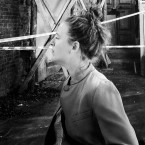 Myriam Lefkowitz
France
Myriam Lefkowitz
France
An appointment between a performer and a spectator at a certain time and place. When they meet, a single rule is set: “We will not talk, but if anything bothers you don’t hesitate to tell me.” Walk, Hands, Eyes is a silent walk through the streets of a city to experience an entirely new connection between walking, seeing and touching. During the one-hour walk, each performer chooses focal points and moments when they ask the spectator to open their eyes briefly. In such a way they take personal “snapshots” – images within a person’s head. Walk, Hands, Eyes offers everyone the chance to see Medellin from a new perspective – a city…
Read more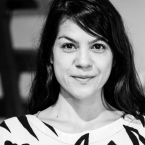 Natalia Giraldo Giraldo
Colombia
Natalia Giraldo Giraldo
Colombia
In this work, Giraldo uses two images. One figure is the Virgin, one of the most worshipped figures in the Catholic Church, to show the interrelation between the concept of the Virgin and the faith in her virginity and the Immaculate Conception; the other figure is the biblical character Edith, wife of Lot, who refused to follow the mandate of looking ahead and hoping to be saved. She turned into a pillar of salt after turning back to see, recognize and remember the life in Sodom, the place that represents the reality on Earth. In the Old Testament, salt means…
Read more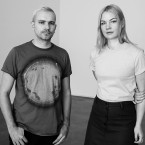 Nathalie Djurberg and Hans Berg
Sweden
Nathalie Djurberg and Hans Berg
Sweden
During the last years Djurberg has firmly established her unique artistic personality on the international scene. In her mesmerizing claymation films and hand-crafted sculptures, set against music and sound composed by her long term collaborator Hans Berg, she explores the repressed fears and dark recesses of humanity. Her immersive installations draw us into the center of a swirling vortex of unconscious motivations and hidden desires. Obscure themes of revenge, brutality, anxiety, and dark sexuality are acted out with child-like playfulness, reminding us on the fragile border separating innocence from depravity. In The Parade of Rituals and Stereotypes (2011) instead, we…
Read more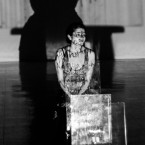 Nathaly Rubio
Colombia
Nathaly Rubio
Colombia
The institutions of a society form its base. When there is a lack of credibility in those institutions the base begins to erode, making it impossible to create a social structure. By using fragments of memories, stories, hints and anectdotes, Rubio creates a mult-layered performace that questions the family, one of the most revered institutions in our society. The artist does what is normally not done: she questions in public stories that the people closest to her do not want to see or remember. At the same time, in the construction of this work she questions reality, fiction and the truth, and in very personal terms she shows the anguish, pain and incredulity that…
Read more
